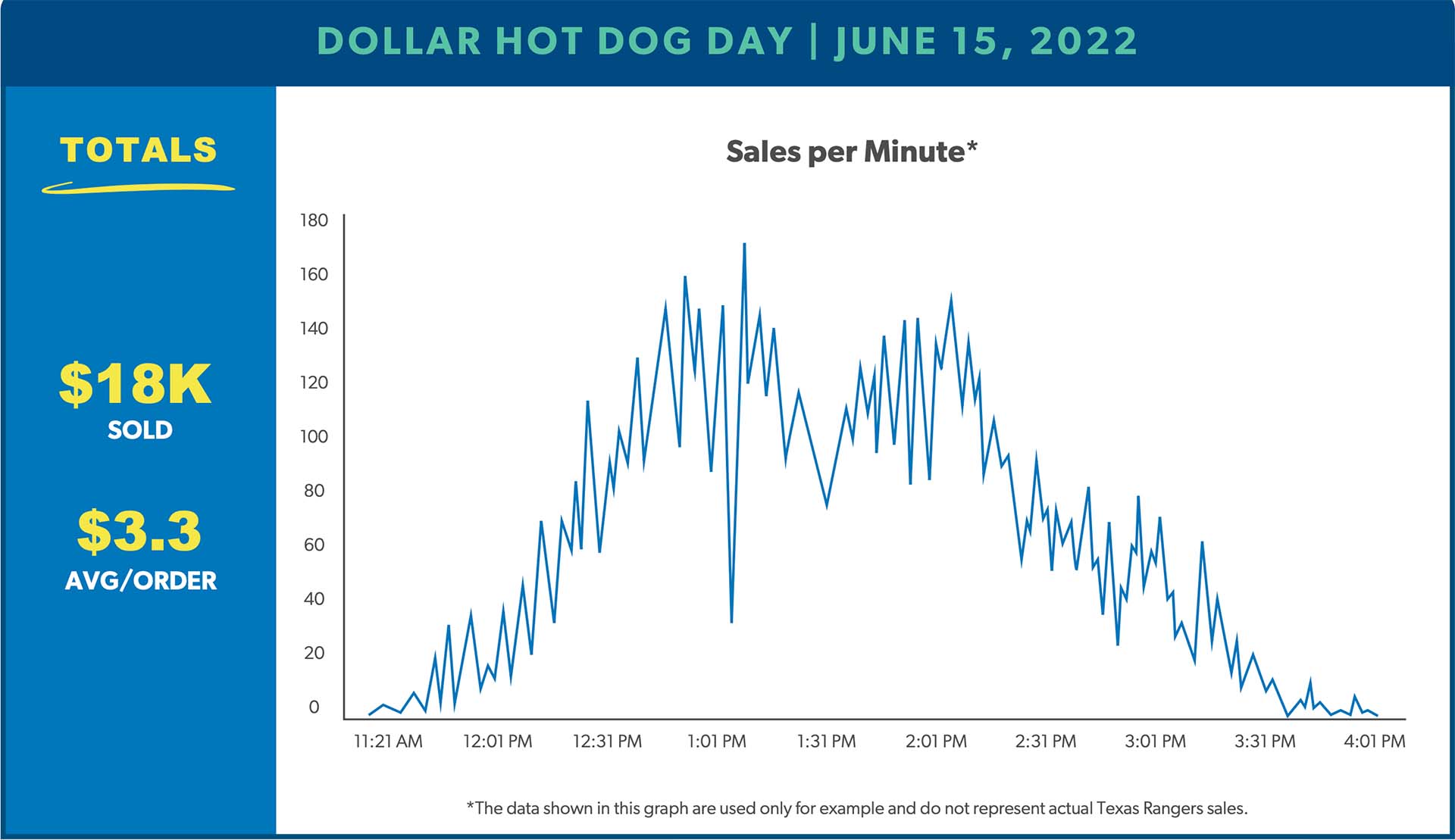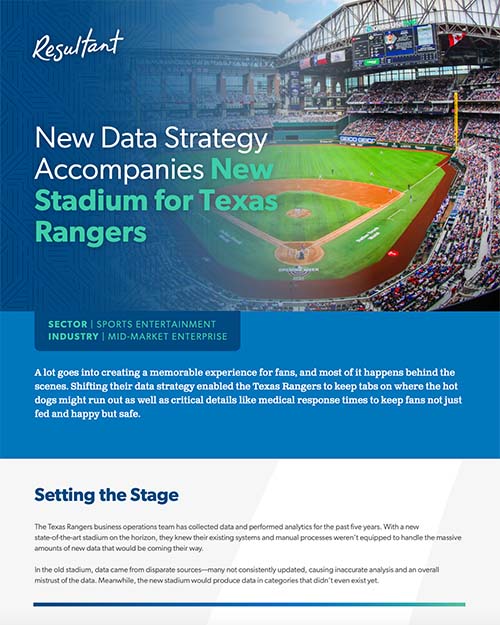Setting the Stage
The SDA framework helped the Rangers business operations team get the entire organization on board with their vision and its delivery.
Recommendations
Infrastructure
Not every system upgrade project must include a move to the cloud. The larger IT landscape in the new stadium had a brand-new, state-of-the-art, on-prem infrastructure that would handle the Rangers’ needs beautifully when everything connected to it was optimized.
Manual Process Automation
Streamlining and automating the majority of the Rangers’ daily prep processes will facilitate faster data analysis and open up scaling capabilities.
Modern Data Architecture and Structure
The new stadium would bring major changes in types and volume of data. New, modern data architecture and structure will capture, process, and store data in an efficient, effective manner, ensuring scalability for future growth.
Comprehensive Roadmap
Co-developing a comprehensive roadmap, project plan, and budget with the business operations team within an understanding of their objectives and constraints will enable them to get initiative buy-in, articulate success criteria, and outline a feasible multi-year investment schedule.
Data Lakes
Data lakes provide stakeholders a better way to manage data reliability, accuracy, and timeliness while ensuring streamlined access.
A COVID Interruption
Actionable Insights
The Texas Rangers’ business operations team has opened up a world of possibilities for their organization by building a solid foundation for their data strategy and continually asking what else is possible.






